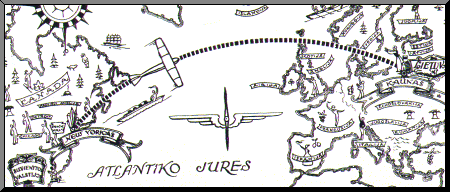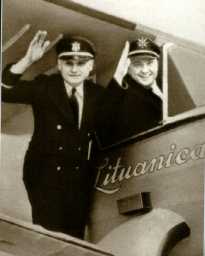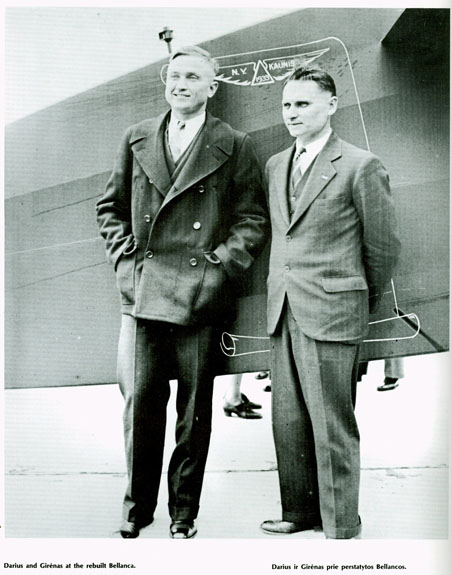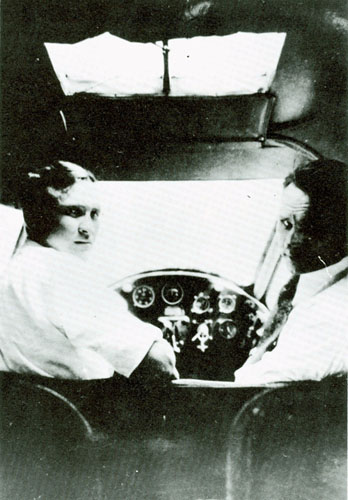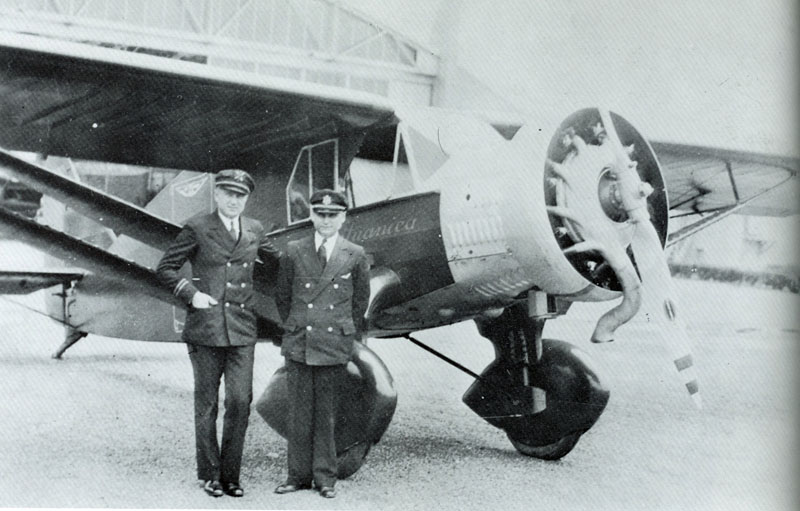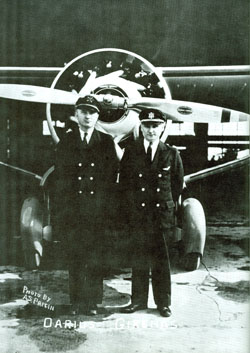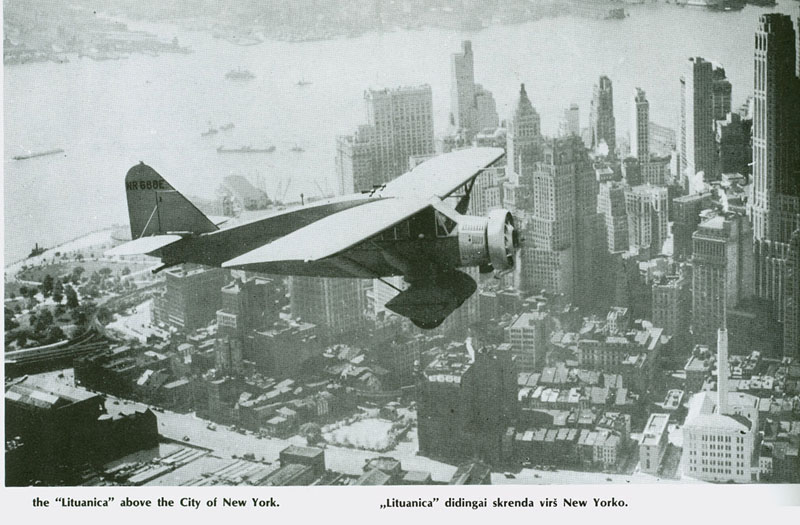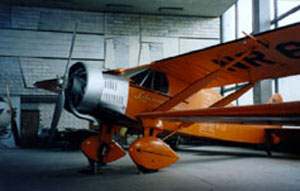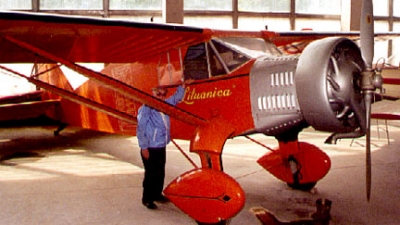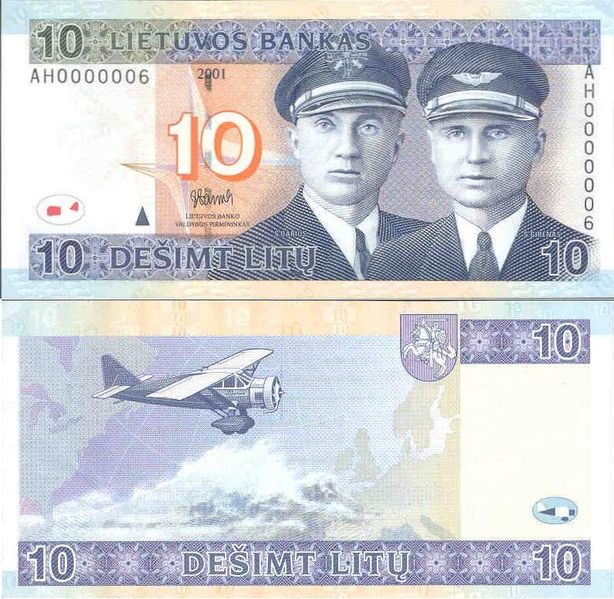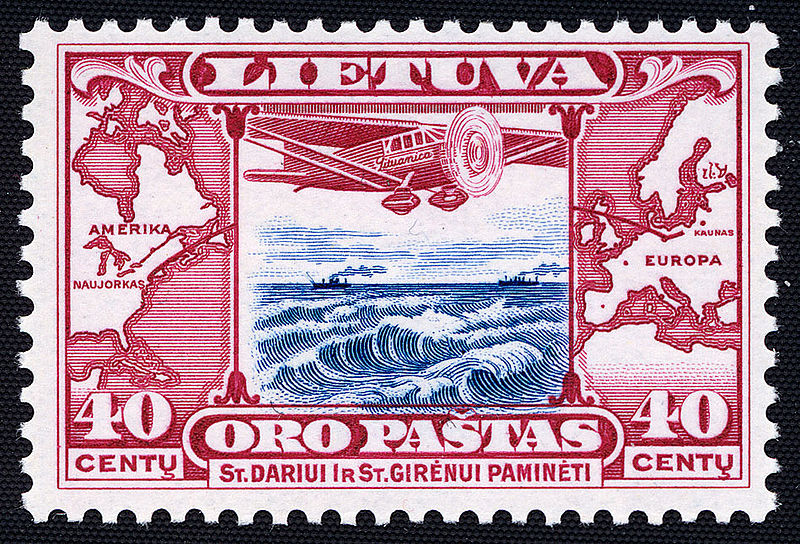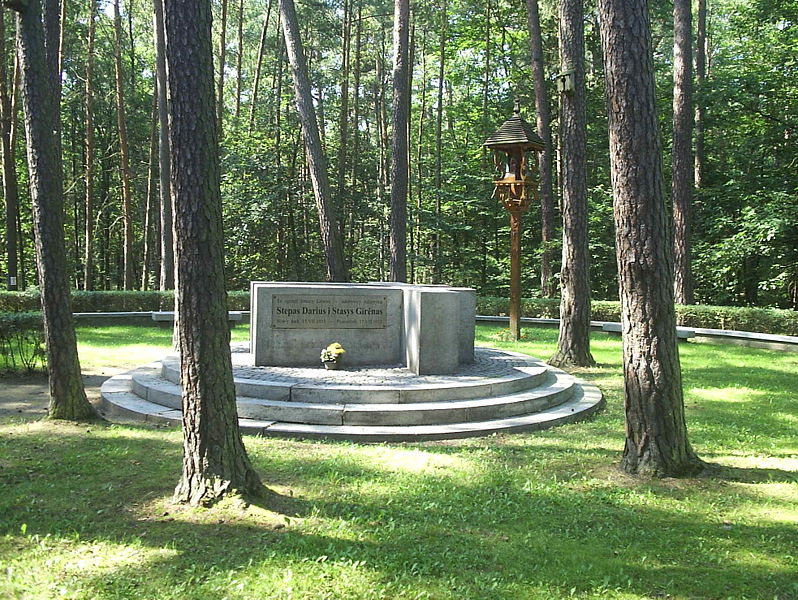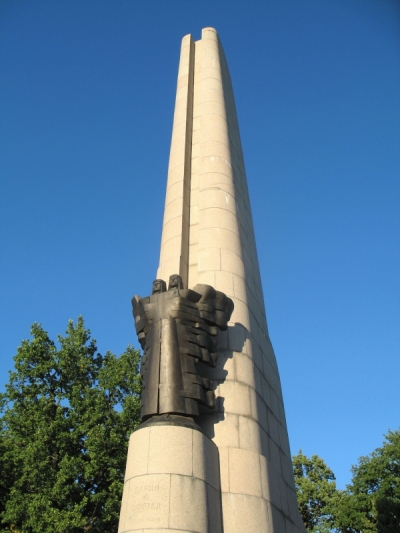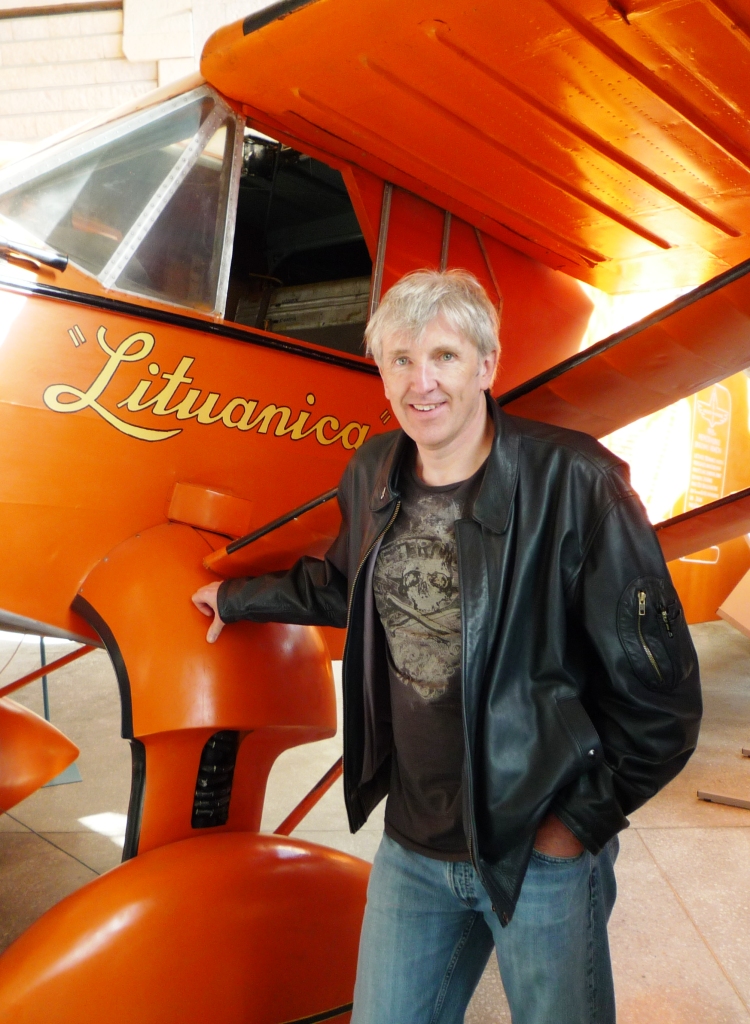Trans-Atlantic flight | New York, USA to Kaunas, Lithuania
| Re-enacting the Trans-Atlantic flight of Darius & Girėnas |
In 2009, we had intended to fly a single engined light aircraft across the North Atlantic. 'We' are Paul Squires and Paul Yates and the whole idea of a trans-Atlantic flight originated from Paul Y's long-standing ambition to fly the North Atlantic single-handed in a light aircraft. This idea appealed to my recently-found sense of adventure and I sort of hijacked the idea resulting in a pact to fly Trans-Atlantic together but with one of us flying the outward leg and the other one flying the home leg so we could each legitimately lay claim to flying the Atlantic 'single-handed' (but not 'solo'). We were originally intending to fly in an Antonov AN-2 which we jointly operated (see Antonov Slideshow ) but, whilst the 'Ant' is a very robust aircraft and in some ways ideal for the extreme conditions which may be encountered, its high fuel burn and its very slow airspeed mean that the trip would take much longer and would require numerous fuel stops. It would also cost a fortune! We therefore started thinking about using my Piper Saratoga which is a smaller but faster aircraft. Our Antonov AN-2 is Lithuanian registered and as it is a large aircraft which can carry between 8 and 20 passengers, it cannot be flown simply based upon an ordinary pilot's licence. Consequently, back in 2004/5 it was necessary for us to undergo training for a type-rating in Lithuania. During the time we have operated the Antonov, we have both spent quite a bit of time in Lithuania and have formed a strong bond with the country and its people. Lithuania is a very interesting country with much more to offer culturally than anyone who has not been there would ever imagine. Whilst there, we soon became aware of the 1933 record breaking trans-Atlantic flight of Darius and Girėnas and the fact that they were Lithuanian heroes and the thought began to form that it would be a great adventure and a significant challenge to try to replicate their flight (hopefully without repeating the tragic ending!) A little bit of background on Darius and Girėnas and their ill-fated flight...The Pilots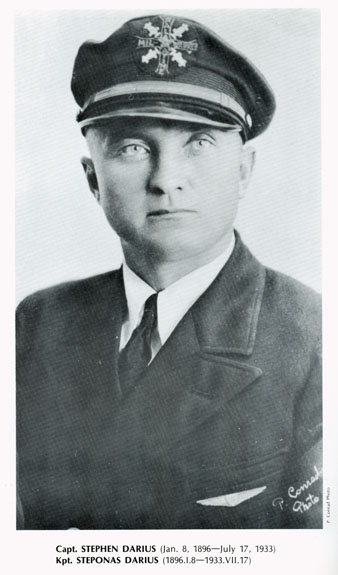 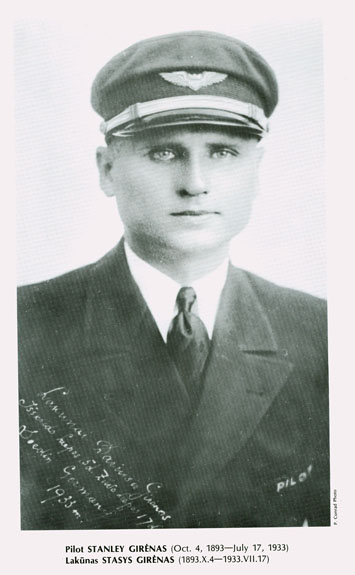
Steponas Darius and Stasys Girėnas Steponas (Stephen) Darius and Stasys (Stanley) Girėnas with the Lituanica - click for larger picture Darius and Girėnas were Lithuanian pilots, emigrants to the United States, who made a significant flight in the history of world aviation. On July 15, 1933, they flew across the Atlantic Ocean, covering a distance of 3,984 miles (6,411 kilometers) without landing, in 37 hours and 11 minutes. In terms of comparison, as far as the distance of non-stop flights was concerned, their result ranked second only to that of Russell Boardman and John Polando, and ranked fourth in terms of duration of flight at the time. Although Darius and Girenas did not have navigational equipment and flew under unfavorable weather conditions, the flight was one of the most precise in aviation history. It equaled, and in some aspects surpassed, Charles Lindbergh's classic flight. Their aircraft - Lituanica - also carried the first Transtlantic air mail consignment in history. The AircraftOn June 18th 1932, Steponas Darius and Stasys Girėnas purchased a Bellanca CH-300 Pacemaker aircraft, serial No. 137, from Pal-Waukee Company for 3200 US dollars. Since 1929, 40 units of this model had been built. It was a single-engine, six-seat, high-wing monoplane. The fuselage was welded chrome-moly steel tubing covered with fabric. The cabin interior was covered with a sound-absorbing material. The fuselage had side and top windows, with doors on both sides. The wings were of wooden construction, with two spars, also fabric covered. The spars and ribs were made of spruce strips and plywood. The wings had two gasoline tanks with a total capacity of 88 US gallons (333 Litres). Wing struts were 2/3 wood, 1/3 steel (at the wings) with aero-dynamic steel ribs, fabric covered, giving an additional 47 ft² (4.4 m²) lifting surface. Tail surfaces were made of welded steel tubing. The horizontal stabilizer was of spruce strips and plywood, with the trim-angle adjustable in flight. The landing gear was a curved steel bar with rubber rope suspension. Wheels 30 × 5 inches (762 by 127 mm). The engine was a Wright J6, radial, air cooled, 9 cylinders, 300 hp (225 kW). Funds for the plane was raised from numerous Lithuanian clubs and organizations. On January 20, 1933, the aircraft was moved to E.M. Laird workshops at 5321 W. 65th St. in the Clearing Industrial District of Chicago, where she was rebuilt and made suitable for the trans-Atlantic flight. New elongated wings were built, with two additional gasoline tanks installed in the fuselage, having 220 and 185 US gallon capacity, each equipped with emergency dump valves. Beneath the pilot's seat a 25 US gallon oil tank was outfitted with 12 cooling tubes. A longer horizontal stabilizer was built. Aero-dynamic wheel pants were installed, and the fuselage received a new fabric covering. A new, higher compression engine, 365 hp (272 kW) Wright Whirlwind J6-9E, ser. No. 12733, had a "speed ring". On March 29, 1933, the rebuild was complete, the registration number was changed to NR-688E, and the aircraft was painted orange. On both sides of the fuselage scrolls with the names of the sponsors were painted. The aircraft was dubbed "Lituanica" (Lithuania in Latin).
The FlightEven today an ordinary, unprepared plane of this size cannot cover such a distance (a Cessna 152, for instance, can fly only 1200 km). The flight was also important from the scientific point of view, exploring the air flows and capabilities of this type of the aircraft. They were the first who officially carried air mail from North America to Europe. In their last letter, the pilots wrote that either a successful flight or a possible catastrophe would be valuable and significant enough and hence it would be worthwhile to fly in either case. After taking off from Floyd Bennett Field in New York on July 15, 1933, 6:24 AM EDT, Darius and Girėnas in their Lituanica successfully crossed the Atlantic, only to perish on July 17, 0:36 AM (Berlin Time) by the village of Kuhdamm, near Soldin, Germany (now Pszczelnik, area, Poland - 52°51'11.57"N 14°50'17.78"E ) The planned route was: New York - Newfoundland - Atlantic Ocean - Ireland - London - Amsterdam - Swinemünde - Königsberg - Kaunas (a total of 7,186 km). Due to weather conditions over Ireland, they veered to the north and reached Germany via Scotland and the North Sea. In 37 hours and 11 minutes, until the moment of the crash, they had flown 6411 km (over 7000 km in actual flight path), only 650 km short of their goal — Kaunas. Possible reasons for the crashA Lithuanian board of investigation was appointed to determine the cause. It concluded that the pilots were properly qualified, and the aircraft was properly outfitted. They added that the most difficult part of the flight was executed with great precision. The commission concluded that during the crash the aircraft engine was running (the propeller was rotating), and there was enough fuel on board. Some sources mention pilot error, but both pilots were highly experienced. During his career as pilot, Darius had never been involved in any previous accidents. In 1931, Girėnas had won first prize in a flight festival in Chicago for gliding his plane and landing with a dead engine. According to the board, the catastrophe occurred due to difficult weather conditions combined with engine defects. There were rumors and suspiscions in some quarters, that the plane was shot down, having been mistaken for a spy plane, because it flew near a Nazi concentration camp. Autopsies of pilots revealed no signs of any bullets. However, not all parts of the plane were returned to the Lithuanian government. After the crashOn July 19, the German plane "Derluft", carried the bodies of the pilots back to Lithuania. The people of Kaunas met the heroes in great sorrow. The funeral was a solemn occasion and was the cause of official national mourning. 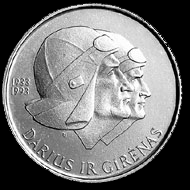
Litas commemorative coin issued for the 60th anniversary of the flight
A few months after the Lituanica tragedy, some prominent members of the Chicago Lithuanian community discussed the possibility of financing another transatlantic flight. This idea was greeted with much enthusiasm, and enough funds were raised during the Great Depression. A faster and more modern Lockheed Vega was purchased from the Lockheed Aircraft Corp., the same model used by Wiley Post in his round-the-world flight, and by Amelia Earhart, the first woman to fly solo across the Atlantic. The aircraft was christened Lituanica II on Sunday, April 22, 1934. When the pilot originally chosen for the flight unexpectedly resigned in the spring, the Lithuanian organizers turned to Felix Waitkus, and he accepted the challenge. Although he landed in Ireland and not in Kaunas, he entered aviation history for being the sixth pilot to fly solo across the Atlantic. In 1936 the Lithuanian government decided to build a mausoleum for Steponas Darius and Stasys Girėnas in Kaunas' old cemetery, that was destroyed after Soviet re-occupation. From then until the present day, the wreckage of Lituanica has been on display in the Vytautas the Great War Museum in Kaunas. At present the pilots' bodies rest in the Military Cemetery of Šančiai, Kaunas. The sports stadium in the city of Kaunas, S.Darius and S.Girėnas Stadium, where the Lithuanian national soccer team is playing its home matches, is named after them. Our flight So, we've got a lot to live up to and at the time this flight is being planned, we're not even sure if we can follow anything like the same route as Darius and Girėnas due to the possibility that the Piper Saratoga is incapable of carrying sufficient fuel to make the trip in one leg. Of course, the rear four seats will have to come out and we'll have to take on a ferry tank but fuel is heavy and the weight and balance and center of gravity of the aircraft are critical, not only to its handling characteristics, but also literally to whether it can get off the ground and whether it can stay airborne. June 2009 Well, just about everything which could have gone wrong has done! The Saratoga is currently grounded and in pieces and it's less than a month to the intended departure date. We've had illness, arguments, mechanical problems and money issues and I'm beginning to wonder if this trip is ever going to take place. The Saratoga went in for an annual check in March and unfortunately, the maintenance facility found some corrosion on the rear wing spars. This is an expensive problem to correct. A piece of metal running along the trailing edge of the wing needs to be replaced and the part needs to be sent from Piper at a cost of £1800. As apparently, there is no repair schedule which would allow new metal to be spliced into the uncorroded metal, a full new part must be fitted but when it comes, the part is undrilled so the many, many bolts which attach this part to the wing need to have holes manually drilled. This is a specialist job and will cost another £3400 minimum. Once completed, this specialist work needs to be dual checked and the result is that the annual inspection which should have cost about £2000 is looking likely to cost more than £12,000! This is money which at the moment, due to other commitments, I just don't have so I'm really tempted to just abandon everything. July 2009 The Saratoga is airworthy again but we cannot get the UK Civil Aviation Authority to approve the fitting of a ferry tank. Without such a modification, the direct route across the Atlantic is a non-starter as we'd run out of fuel less than halfway across. We could fit one ourselves without authorisation and take the risk that we won't be ramp checked and that we won't have any sort of incident (an unapproved modification is likely to invalidate any insurance cover). Alternatively, we can change the routing to allow for refuelling stops, do the flight and undertake to carry out the authentic Darius and Girėnas flight another time when we've learned from our experience and got more people engaged in the project. Reluctantly, this is what we decide to do. We fly the Atlantic in July 2009 (see www.paulsquires.co.uk/xatlantic/xatlantic.html). It was an interesting adventure but it lacked the significance of the flight which we'd originally intended so it's still my intention to do a real Darius and Girenas re-enactment. We're currently looking for sponsors and, as both the AN2 and my Saratoga have now been sold, we're also looking for a suitable single-engined aircraft.
More to follow....... |
